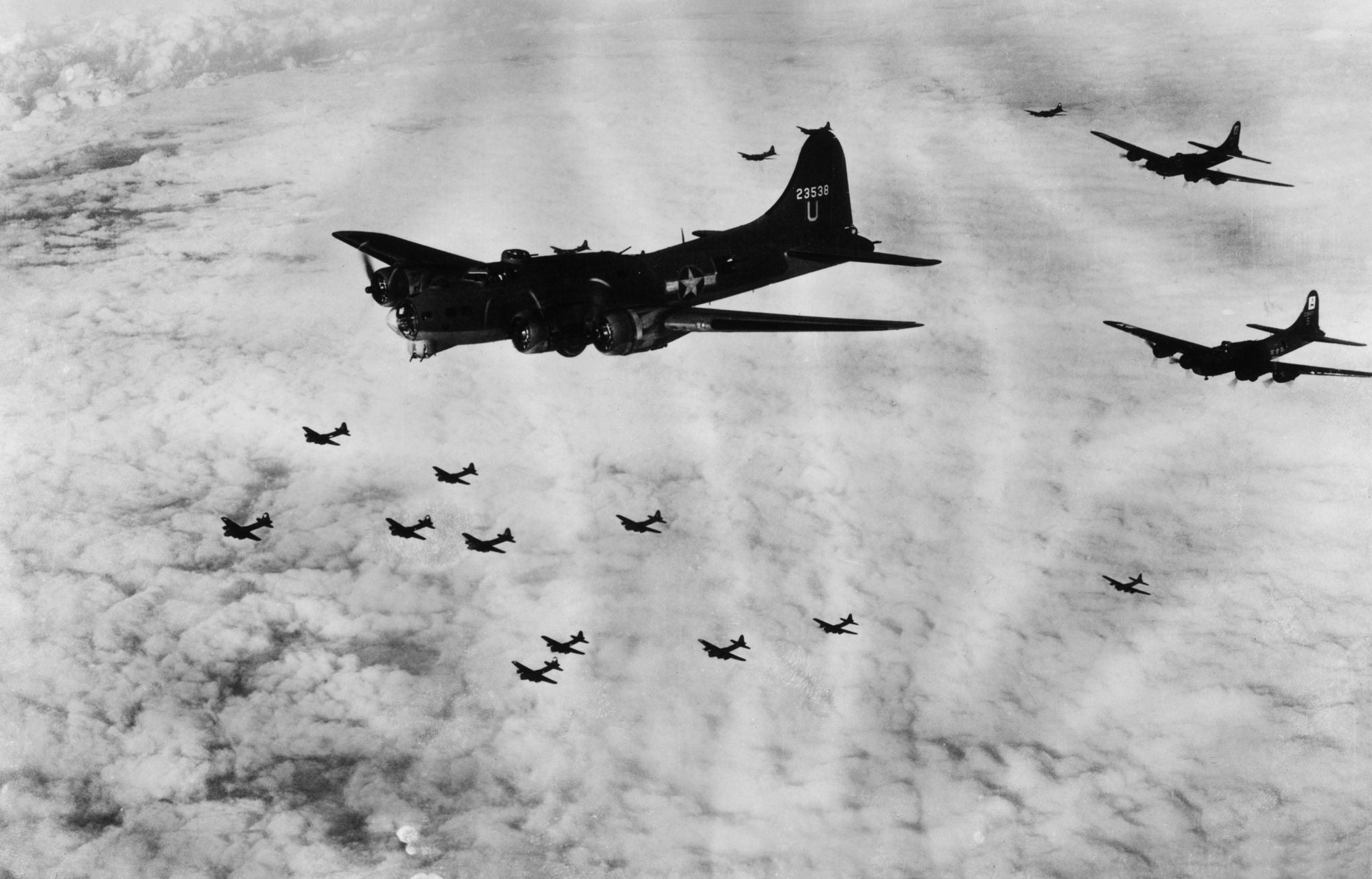
Circa 1942: A squadron of Boeing B-17Gs, known as "Flying Fortresses," flies over clouds en route to Emden, Germany, World War II. The B-17G served in every World War II combat zone and is best known for its strategic daylight bombings of German industrial targets. Photo by Hulton Archive via Getty Images.
In World War II, some of the most dangerous combat missions were flown by B-17 flying fortress bombers. The survival rate, according to the Air & Space Forces Association, for the pilots and their aircrew in B-17s averaged lower than 50%.
In May 1943, at the height of the Allied air campaign in Europe, cinematographers with the US 8th Air Force, working in collaboration with the Army Air Forces 1st Motion Picture Unit, managed to capture the harrowing reality of a B-17 bomber crew in action. That footage became a short documentary released in 1944 titled The Memphis Belle: A Story of a Flying Fortress (full version below).
The documentary chronicles the last and final mission of the Memphis Belle and its 10-man crew. Narrated by a reporter who risked his life to chronicle the mission, the film puts audiences inside the Memphis Belle as it embarks on a flight over Germany to bomb enemy steel mills and refineries, shipyards and submarine pens, factories and munitions plants.
The scenes featured — from the squadron’s pre-mission briefing, to up-close footage of turret gunners battling enemy dogfighters, to images of American airmen bailing out with parachutes from disabled B-17s — provide audiences with a sobering depiction of war. Ultimately, though, it’s meant to be an uplifting story. Upon completing the raid, the Memphis Belle became the first US Army Air Forces heavy bomber to return home after fulfilling its quota of 25 missions.
Read Next: The CIA Used the Fulton Skyhook To Raid an Abandoned Russian Ice Base

Matt Fratus is a history staff writer for Coffee or Die. He prides himself on uncovering the most fascinating tales of history by sharing them through any means of engaging storytelling. He writes for his micro-blog @LateNightHistory on Instagram, where he shares the story behind the image. He is also the host of the Late Night History podcast. When not writing about history, Matt enjoys volunteering for One More Wave and rooting for Boston sports teams.
BRCC and Bad Moon Print Press team up for an exclusive, limited-edition T-shirt design!
BRCC partners with Team Room Design for an exclusive T-shirt release!
Thirty Seconds Out has partnered with BRCC for an exclusive shirt design invoking the God of Winter.
Lucas O'Hara of Grizzly Forge has teamed up with BRCC for a badass, exclusive Shirt Club T-shirt design featuring his most popular knife and tiomahawk.
Coffee or Die sits down with one of the graphic designers behind Black Rifle Coffee's signature look and vibe.
Biden will award the Medal of Honor to a Vietnam War Army helicopter pilot who risked his life to save a reconnaissance team from almost certain death.
Ever wonder how much Jack Mandaville would f*ck sh*t up if he went back in time? The American Revolution didn't even see him coming.
A nearly 200-year-old West Point time capsule that at first appeared to yield little more than dust contains hidden treasure, the US Military Academy said.












